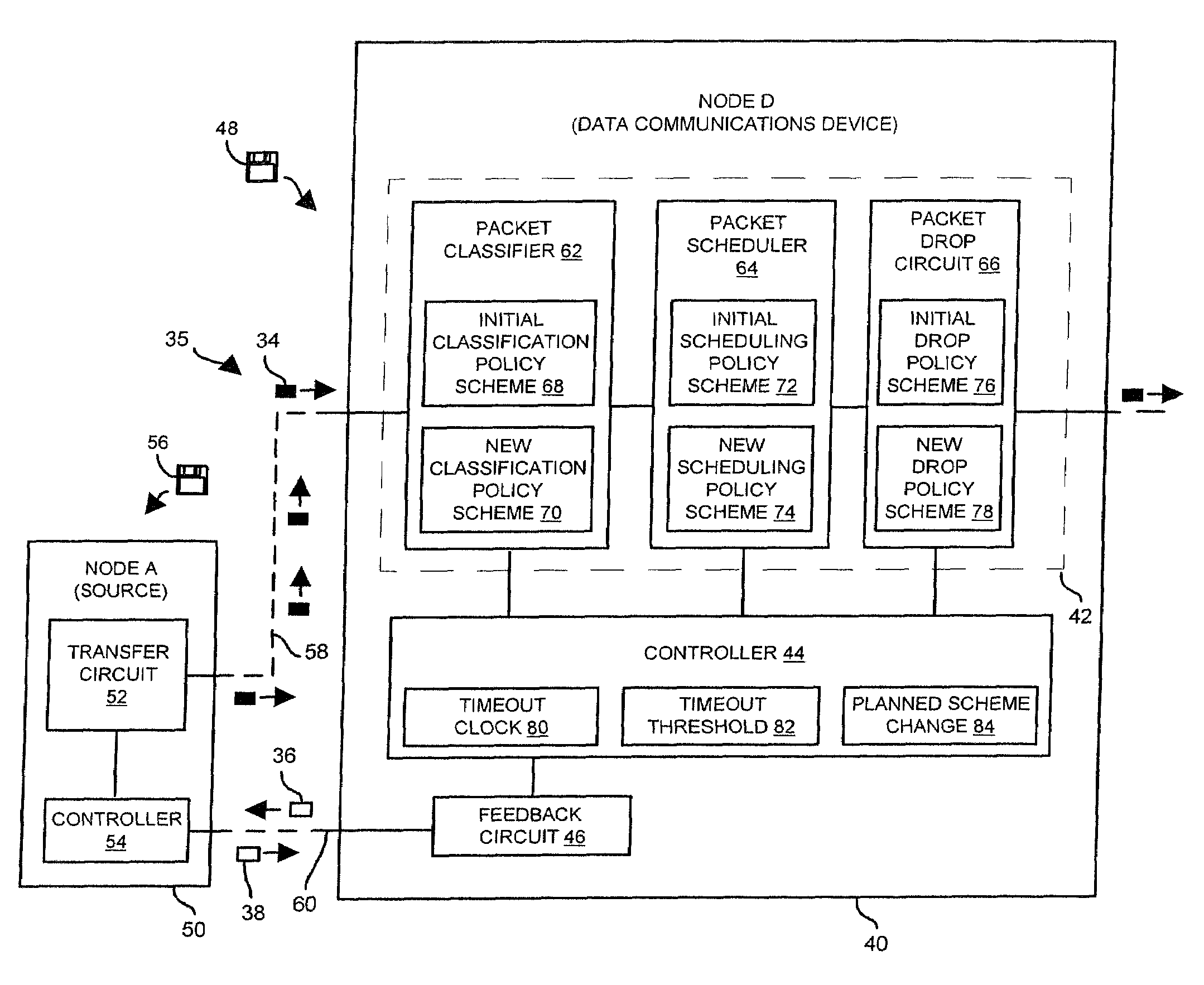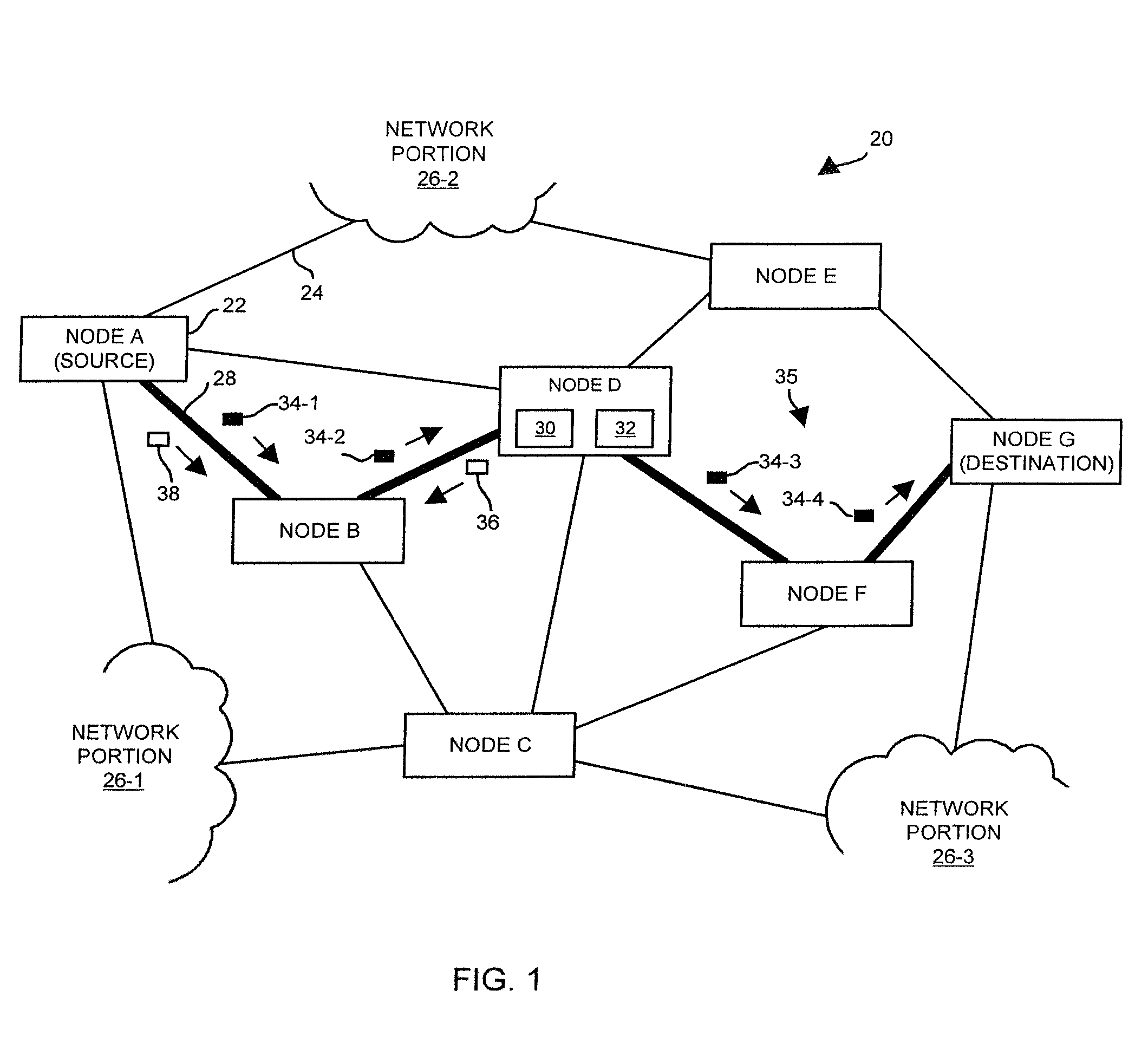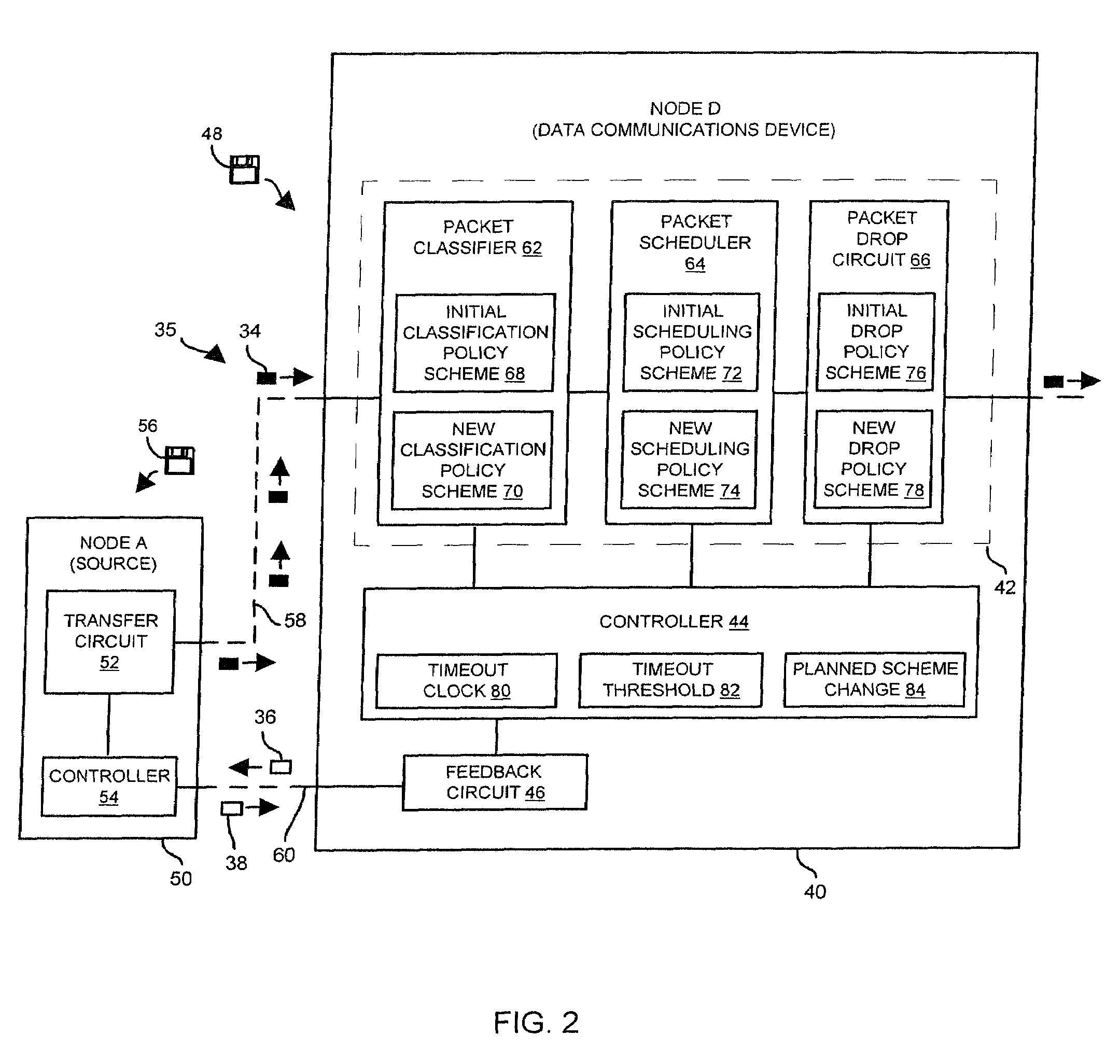Methods and apparatus for managing a flow of packets using change and reply signals
- Summary
- Abstract
- Description
- Claims
- Application Information
AI Technical Summary
Benefits of technology
Problems solved by technology
Method used
Image
Examples
example
[0074]The operation of the source 50 (NODE A) and the data communications device 40 (NODE D) will now be further explained using the following example. Suppose that NODE A is a sending host that provides, as a service, a stream of video images (a video service) to an end-user at NODE G, a receiving host (see FIG. 1). The end-user watches the video service as it arrives and is rendered on-the-fly.
[0075]Further suppose that the data communications device 40 initially routes packets using a FIFO classification policy (see the initial classification policy scheme 68 in FIG. 2), a Weighted Fair Queuing scheduling policy (see the initial scheduling policy scheme 72), and a Random Early Detection drop policy (see the initial drop policy scheme 76). Such policies initially may be the most suitable policies for network conditions existing around NODE D.
[0076]Suppose that the network conditions around NODE D change shortly after NODE A begins providing the video service (i.e., the packet flow...
PUM
 Login to View More
Login to View More Abstract
Description
Claims
Application Information
 Login to View More
Login to View More - R&D
- Intellectual Property
- Life Sciences
- Materials
- Tech Scout
- Unparalleled Data Quality
- Higher Quality Content
- 60% Fewer Hallucinations
Browse by: Latest US Patents, China's latest patents, Technical Efficacy Thesaurus, Application Domain, Technology Topic, Popular Technical Reports.
© 2025 PatSnap. All rights reserved.Legal|Privacy policy|Modern Slavery Act Transparency Statement|Sitemap|About US| Contact US: help@patsnap.com



